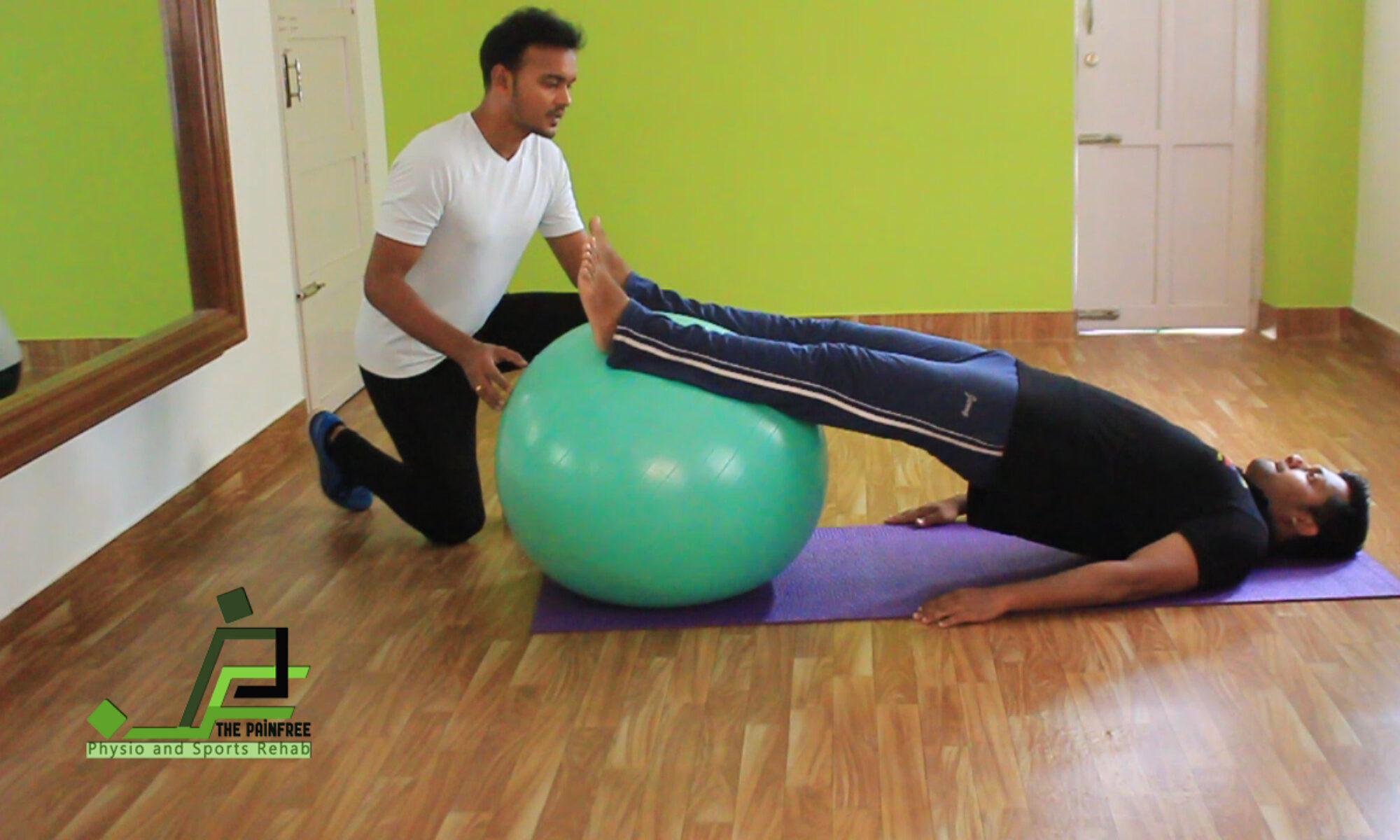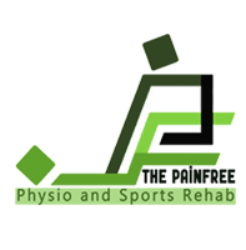Treatments offered in our clinic:
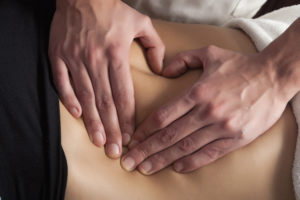
Manual therapy is a physiotherapy primarily used by physiotherapists to treat musculoskeletal pain and disability; it most commonly includes kneading and manipulation of muscles, joint mobilization and joint manipulation
-Wikipedia
Manual physiotherapy is a specialized form of physical therapy delivered with the hands as opposed to a device or machine.
In manual therapy, practitioners use their hands to put pressure on muscle tissue and manipulate joints in an attempt to decrease back pain caused by muscle spasm, muscle tension, and joint dysfunction.
Uses
Muscular pain
Chronic Back and Neck Pain
RSI (Computer use, Prolonged sitting job)
Sport injuries
Join Pain
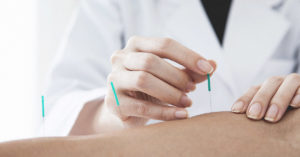
also known as myofascial trigger point dry needling is the use of either solid filiform needles (also referred to as acupuncture needles) or hollow-core hypodermic needles for therapy of muscle pain, including pain related to myofascial pain syndrome. Dry needling is sometimes also known as intramuscular stimulation (IMS). Acupuncture is a broad category of needling practices with solid filiform needles. Modern acupuncture notably includes both traditional and Western medical acupuncture; dry needling is arguably one subcategory of western medical acupuncture.
Chinese style tendinomuscular acupuncture relies on careful palpation of what are called “Ah Shi” points, which often correspond to both trigger points and/or motor points in the myofascial tissue. Chinese style tendinomuscular acupuncture tends to use lower gauge (thicker) needles necessary for puncturing contraction knots with a high degree of precision. On the other hand, lighter styles of acupuncture, such as Japanese style, and many American styles, may tend towards very shallow insertions of higher gauge (thinner) needles. Most acupuncture styles, especially those with lighter techniques, require a detailed knowledge, not only of anatomy but also of the channel networks and connections. Thus, while some forms of acupuncture are not at all the same as dry needling, the term dry needling can refer quite specifically to what is now called Myofascial Acupuncture, Tendinomuscular Acupuncture, or some version of Sports Acupuncture.
-Wikipedia
Uses
- Muscular pain
- Chronic/Severe Back and Neck Pain
- RSI (Computer use, Prolonged sitting job)
- Sport injuries
- Join Pain
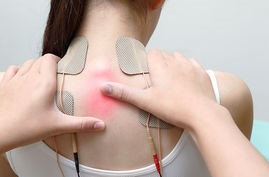
Transcutaneous electrical nerve stimulation (TENS or TNS) is the use of electric current produced by a device to stimulate the nerves for therapeutic purposes. TENS, by definition, covers the complete range of transcutaneously applied currents used for nerve excitation although the term is often used with a more restrictive intent, namely to describe the kind of pulses produced by portable stimulators used to treat pain. The unit is usually connected to the skin using two or more electrodes. A typical battery-operated TENS unit is able to modulate pulse width, frequency and intensity. Generally TENS is applied at high frequency (>50 Hz) with an intensity below motor contraction (sensory intensity) or low frequency (<10 Hz) with an intensity that produces motor contraction.
While the use of TENS has proved effective in clinical studies.
Use
TENS devices are used as a non-invasive nerve stimulation intended to reduce both acute and chronic pain.
-Wikipedia
Uses
- Muscular paiin
- Chronic/Severe Back and Neck Pain
- RSI (Computer use, Prolonged sitting job)
- Sport injuries
- Join Pain
Toggle Content
Electrical muscle stimulation (EMS), also known as neuromuscular electrical stimulation (NMES) or electromyostimulation, is the elicitation of muscle contraction using electric impulses. EMS has received an increasing amount of attention in the last few years for many reasons: it can be utilized as a strength training tool for healthy subjects and athletes; it could be used as a rehabilitation and preventive tool for partially or totally immobilized patients; it could be utilized as a testing tool for evaluating the neural and/or muscular function in vivo; it could be used as a post-exercise recovery tool for athletes. The impulses are generated by a device and are delivered through electrodes on the skin near to the muscles being stimulated. The electrodes are generally pads that adhere to the skin. The impulses mimic the action potential that comes from the central nervous system, causing the muscles to contract. The use of EMS has been cited by sports scientists as a complementary technique for sports training, and published research is available on the results obtained. In the United States, EMS devices are regulated by the U.S. Food and Drug Administration (FDA).
Use
In medicine, EMS is used for rehabilitation purposes, for instance in physical therapy in the prevention of disuse muscle atrophy which can occur for example after musculoskeletal injuries, such as damage to bones, joints, muscles, ligaments and tendons. This is distinct from transcutaneous electrical nerve stimulation (TENS), in which an electric current is used for pain therapy.
In EMS training few muscular groups are targeted at the same time, for specific training goals.
-Wikipedia
Uses
Muscle rehabilitation/strengthening
Bells Palsy
Sport Injuries
Nerve damage rehabilitation
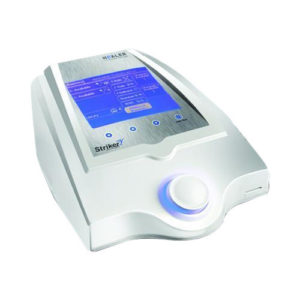
Uses
- Muscular paiin
- Chronic/Severe Back and Neck Pain
- RSI (Computer use, Prolonged sitting job)
- Sport injuries
- Join Pain
Toggle ContentSpinal traction is a form of decompression therapy that relieves pressure on the spine. It can be performed manually or mechanically. Spinal traction is used to treat herniated discs, sciatica, degenerative disc disease, pinched nerves, and many other back conditions.
Spinal traction stretches the spine to take pressure off compressed discs. This straightens the spine and improves the body’s ability to heal itself.
Uses
•slipped discs
•bone spurs
•degenerative disc disease
•herniated discs
•facet disease
•sciatica
•foramina stenosis
•pinched nerves
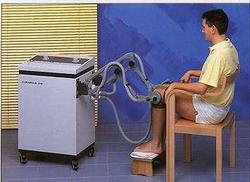
Diathermy is a therapeutic treatment most commonly prescribed for muscle and joint conditions. It uses a high-frequency electric current to stimulate heat generation within body tissues.
The heat can help with various processes, including:
•increasing blood flow
•relieving pain
•improving the mobility of tissues as they heal
Uses
- Chronic joint pain
- Arthritis
- Deep muscle pain
- Chronic back pain
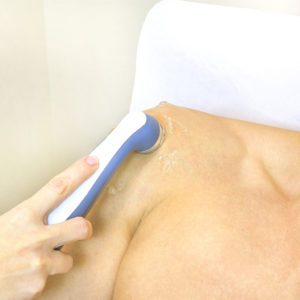
Ultrasound is a therapeutic modality that has been used by physical therapists since the 1940s. Ultrasound is applied using a round-headed wand or probe that is put in direct contact with the patient’s skin. Ultrasound gel is used on all surfaces of the head in order to reduce friction and assist in the transmission of the ultrasonic waves. Therapeutic ultrasound is in the frequency range of about 0.8-3.0 MHz.
Ultrasound can produce many effects other than just the potential heating effect. It has been shown to cause increases in tissue relaxation, local blood flow, and scar tissue breakdown. The effect of the increase in local blood flow can be used to help reduce local swelling and chronic inflammation, and, according to some studies, promote bone fracture healing. The intensity or power density of the ultrasound can be adjusted depending on the desired effect. A greater power density (measured in watt/cm2 is often used in cases where scar tissue breakdown is the goal.
Uses
- Accelerate tissue healing
- Tennis elbow
- PA Shoulder
- Muscle injuries
- Pain relief
- Arthritis
- Plantar fascitis
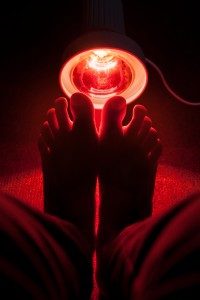
Heat therapy, also called thermotherapy, is the use of heat in therapy, such as for pain relief and health. It can take the form of a hot cloth, hot water bottle, ultrasound, heating pad, hydrocollator packs, whirlpool baths, cordless FIR heat therapy wraps, and others. It can be beneficial to those with arthritis and stiff muscles and injuries to the deep tissue of the skin. Heat may be an effective self-care treatment for conditions like rheumatoid arthritis.
Heat therapy is most commonly used for rehabilitation purposes. The therapeutic effects of heat include increasing the extensibility of collagen tissues; decreasing joint stiffness; reducing pain; relieving muscle spasms; reducing inflammation, edema, and aids in the post acute phase of healing; and increasing blood flow. The increased blood flow to the affected area provides proteins, nutrients, and oxygen for better healing.
Uses
- Muscular pain
- Chronic/Severe Back and Neck Pain
- RSI (Computer use, Prolonged sitting job)
- Sport injuries
- Join Pain
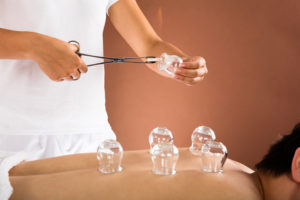
Cupping therapy is an ancient form of alternative medicine in which a therapist puts special cups on your skin for a few minutes to create suction. it has many purposes, including to help with pain, inflammation, blood flow, relaxation and well-being, and as a type of deep-tissue massage.
It dates back to ancient Egyptian, Chinese, and Middle Eastern cultures. One of the oldest medical textbooks in the world, the Ebers Papyrus, describes how the ancient Egyptians used cupping therapy in 1,550 B.C.
Uses
- Pain Relief
- Reduce Joint Stiffness
- Reduce swelling
- Promotes healing
- Body rejuvenation
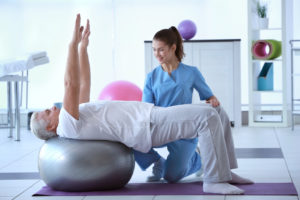
Individualized Exercise Program
Physical therapy involves evaluation of an individual’s movement, physical capabilities, body type, and activity level in order to prescribe exercise and other physical means to help improve function. For certain conditions and diagnoses, a well-trained physical therapist will develop a customized exercise program based on research of the most effective spine exercises. The exercise program’s pacing, specific exercises, and amount of practice with the physical therapist will vary depending on the condition and the individual’s needs.
Developing the right exercise for the individual sometimes requires trial and error, reviewing the person’s response to the exercise, and adjusting the exercise accordingly.
Proper Exercise Technique
The proper exercise technique allows the patient to isolate the desired muscle/muscle group that increases the effectiveness of an exercise. A physical therapist will instruct a patient on the proper technique for performing each exercise in the individualized exercise program. Physical therapists strive to continually improve their exercise techniques, learning new ones as they come out, and scrutinizing new fads. The therapist will also cover posture and movement exercises, suggesting improvements for the patient that will provide added protection for the spine.
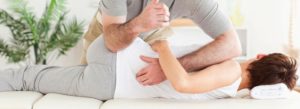
As a treatment, manipulation attempts to improve joint range of motion and balance tissue and muscle mechanics in order to relieve pain.
Manipulation Techniques by a Physiotherapist
There are numerous manipulation techniques a Physiotherapist may use. Common forms of manipulation used today that a patient may encounter include:
•Cranial-sacral
•Counterstrain
•High velocity-low amplitude (HVLA) (the classic “thrust” technique)
•Muscle energy
•Myofascial release
With the patient sitting or lying down on a table, the Physiotherapist will gently apply a precise amount of manual pressure in a specific direction. The pressure is applied either directly in the affected areas or at some distance away. It is used to put the tissues at ease (relaxed) or to engage them at their functional limit in order to effect the following:
Uses
•Treat structural and tissue abnormalities (vertebrae, muscles, myofascial structures, etc.)
•Relieve joint restriction and misalignment
•Restore muscle and tissue balance
•Promote the movement of bodily fluids
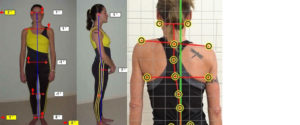
Posture provides much information regarding the natural state of their tissues. Through postural analysis it is possible to determine which areas of their body are under more strain than others, and which muscle groups are causing this strain.
Professional Analysis:
A trained eye looking at a posture picture of someone with back, neck and just about any kind of muscle or joint pain will observe asymmetry, compensations and adaptations tied to the cause of the problem by looking at:
•Alignment. Whole-body posture picture photos are taken from the front, back and side, often in front of a PostureZone assessment grid. The vertical and horizontal lines make it easy to pinpoint alignment problems, such as one shoulder that is higher than the other…one arm that is held closer to the body…a head that juts too far forward…or feet that turn in too much.
•Balance. To assess this, the professional will often ask you to perform a couple of balance exercises. For instance, you may need to stand on one foot with the other foot held off the ground, thigh parallel to the floor. This is an important part of your professional posture assessment as poor balance suggests weakness in the core, the band of muscles that encircle your midsection to connect and support the upper and lower halves of your body.
•Gait. During your assessment the posture professional often will observe how you walk. He or she will note how each foot strikes the ground…how the knees flex…and whether the head, torso or pelvis shifts to the side, or moves with symmetry.
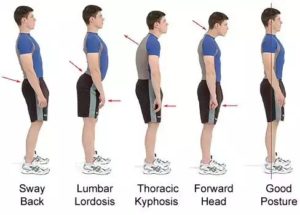
A posture assessment typically takes about 15 to 20 minutes. Based on the results, the posture professional can then suggest an individualized Posture improvement program to improve your posture – so you can look and feel your best, and live an active, pain-free life.
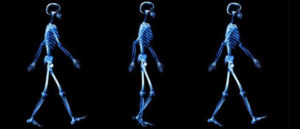
Gait: study of human motion, using the eye and the brain of observers, augmented by instrumentation for measuring body movements, body mechanics, and the activity of the muscles. Gait analysis is used to assess and treat individuals with conditions affecting their ability to walk.
It is also commonly used in sports biomechanics to help athletes run more efficiently and to identify posture-related or movement-related problems in people with injuries.
Observation of gait is also beneficial for diagnoses in chiropractic and physiotherapy professions as hindrances in gait may be indicative of a misaligned pelvis or sacrum. As the sacrum and ilium biomechanically move in opposition to each other, adhesions between the two of them via the sacrospinous or sacrotuberous ligaments (among others) may suggest a rotated pelvis. Physiotherapist use gait to discern the listing of a pelvis and can employ various techniques in order to restore a full range of motion to areas involved in ambulatory movement. Physiotherapist adjustment of the pelvis has shown a trend in helping restore gait patternsas has osteopathic manipulative therapy.
